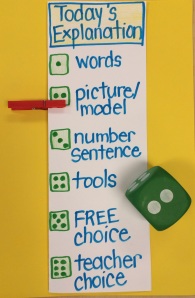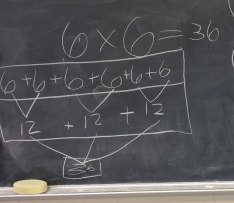
MONDAY, MARCH 2- DAY 3
Ms. Davida Tanner will be our substitute counselor this week. She worked with us in the fall.
Pig N Out Night
Pig N Out Night
TUESDAY, MARCH 3- DAY 4
7:25- 4th grade PLT
7:30- Choplin @ principals meeting
1:00- 3rd grade PLT
6:00- Human Relations Banquet: Olivia Brandon will represent LES
WEDNESDAY, MARCH 4- DAY 1
7:20: IEP (Choplin, Ward, Isbell)
8:15- K PLT
11:45- 1st PLT
Alex's Night
THURSDAY, MARCH 5- DAY 2
2:45: Teach Like a Champion Book Club in Ms. Palmer's room
FRIDAY, MARCH 6- DAY 3
8:00- Choplin at meeting at Education Building
5:30- Winter Blast!
----------------------------------------------------------------

HAPPY SOCIAL WORKER WEEK
MRS. ROYAL!
WE APPRECIATE YOU!
-----------------------------------------------------
NEAT IDEAS FOUND ON PINTREST WHILE WATCHING IT SNOW!
Credit is sited by including each website.
http://kidworldcitizen.org
------------------------------------------------------------------------
 http://levelitbooks.com/
http://levelitbooks.com/
Scan ISBN to Lookup Book
Finding the reading levels/measures is as easy as scanning the ISBN on the back of your book. Within seconds, you will be viewing the Guided Reading (GR), DRA, Grade Level Equivalent (GLE), and/or Lexile levels/measures for your books.
What to expect? We have over 245,000 books leveled that include atleast one of the four reading classifications (GR, GLE, DRA, Lexile). If we don't currently have the book leveled that you scanned, we will take note of it and try to get the levels/measures as soon as we can. In the event that you scan a book that we do not have, we can look it up from over 7 million book possibilites so you can still add it to your library or wish list.
What not to expect? At this time, it isn't realistic to expect that every single book ever published will be found. We do our best of adding the best content available and we are constantly expanding our database.
----------------------------------------------------------
Spark Student Motivation: Flashlight Friday!
Can I get a whoop whoop? It's Saturday! Let's get motivated!
I've given my class book lights to use during reading, but I got a better idea after Jen {Teaching and Laughing} linked up with me last week (thanks Jen!!!).
You're students will FLIP FOR FLASHLIGHT FRIDAY!!!
Each student has their own mini flashlight (easy to hold while reading).
*Picked these up at Dollar Tree!
*Picked these up at Dollar Tree!
These little babies were perfect for our reading time!
We shut off all the lights and closed the blinds to create the right ambiance!
I don't think it's been this quiet in my room all year! (just saying!)
They were so excited they could barely stand it, but they got right to reading!
They BEGGED me for extra reading time!
It was so awesome to see them spread all over the room enjoying their books.
They weren't very happy to return their flashlights to the box, but it will be great motivation for reading!
Flashlight Friday will be a weekly event that I KNOW my students will look forward to! I'm sure they'd love to use those flashlights everyday, but it will make Fridays extra special!
I can't wait until next week! (No one will be absent on Fridays! haha)
UPDATE: Check out my new post on how I used finger flashlights too! :) Click here!
I hope you had a wonderful week! Please link up any lessons, ideas, tips, tricks, incentives, ANYTHING you do get your students motivated or excited!
UPDATE: Check out my new post on how I used finger flashlights too! :) Click here!
I hope you had a wonderful week! Please link up any lessons, ideas, tips, tricks, incentives, ANYTHING you do get your students motivated or excited!
Don't forget to grab my button and link back to this post!
Check out all the wonderful ideas from my friends who link up and don't forget to leave some love by commenting....we LOVE comments!

http://teach-bake-love.blogspot.com/
TUESDAY, SEPTEMBER 4, 2012
No Homework Binder
To visit my new blog to see more ideas, visit www.elementaryendeavors.weebly.com
I am BEYOND excited about this idea...lemme tell you!
I am BEYOND excited about this idea...lemme tell you!
On my team, we do a great job of issuing lunch detentions and other consequences if a kiddo doesn't have their homework ready on the assigned day. However, I have a hard time keeping track of just how many times a particular kiddo happens to "forget" their assignments. I found this idea on Pinterest, and plan on using it to help me this school year.
It's called the "No Homework" binder. Here's how it works:
Each kiddo has a sheet that looks like the one pictured above in a binder that also contains five plastic dividers (since I have five classes). During those first few days of school, you have your kids fill our their designated sheet with their name and hour. Then, you place their sheet behind their designated hour's folder. Each time that particular kiddo forgets their homework assignment, they are to go to the binder and fill our the date, name of the assignment, and the reason they forget their homework (or didn't complete it). The teacher can then assign a lunch detention, and keep track of how many times that student isn't completing or turning in an assignment.
The best part? It's in the student's own handwriting-and allows the kids to THINK about why they didn't finish their homework! What GREAT documentation! So far it has been very successful too. :)
--------------------------------------------------------
 https://beyondtraditionalmath.wordpress.com
https://beyondtraditionalmath.wordpress.comTransform Problem Solving: Push Them to Explain Their Thinking in One Simple Step
A few weeks ago it was time for our daily problem solving block in math class, and I looked over a few shoulders to find the most aggravating thing. The answers written (sometimes incorrectly) with nothing else.
So here was the problem (from Practice Problems for Multiplication and Division):
Jessie bakes cupcakes for her local business. Six orders were called in on the phone. Each order included a half dozen cupcakes. How many cupcakes should she make?
Young learners are notorious for answering math problems like this:
That’s it. Granted it is the correct answer, but no explanation of their thinking or their strategy. SO aggravating for a teacher who is constantly pushing for students to explain their reasoning. SO not in line with the math practice standards and what they are pushing students to do.
So I implemented a little game to help transform problem solving, specifically targeting how they are explaining their thinking. This poster is up hanging on my chalkboard:
Here is how the “game” works:
1. A student rolls the dice.
2. Whatever we land on is the preferred method of communication for the day. The students must try to explain their strategy on their papers using:
- words to describe the steps taken to solve the problem, including how you arrived at the answer.
- a picture or a model of the problem.
- a number sentence to show how the problem was solved.
- tools (manipulatives) to act out the problem. We typically gather around a desk (each student has their own bag of tools) to see how they solved it.
- FREE choice means just that, they can use their favorite way to solve the problem (maybe some other creative strategy beyond any of these four).
- Teacher’s choice. This is kind of awesome because I can ask them to use number lines, graphs, skip counting or some other type of strategy that is appropriate to the problem type.
3. The same student reads the problem out loud to the class (twice).
4. The students solve the problem on their paper as many ways as they can (choosing their best way first), but when they explain it they should try to use the method of communication that was rolled.
5. Two students are asked to come up to the board to show how they solved the problem, and explain their thinking. At least one of the students must have used the method of communication that was rolled.
Since I’ve started to use this, students have gotten better at showing their work, which in turn has made them better at explaining their thinking verbally. It also leads to awesome questions asked of the students who come up to explain their strategy.
Here is what that same problem looked like after we rolled the dice and asked that same student to use the strategy of a model/picture:
Additionally, the other student who came up used a number sentence.
Both great strategies! I love that it encourages the use of different ways to explain, especially when some students get in a rut by only one strategy or one way to explain. It has also been a big help to students who have trouble putting their picture into number sentences.
The best part? The kids think it’s like they are playing the lottery every day.
--------------------------------------------------------------------------------------------------

Lego Math Game {Greater Than or Less Than}
http://www.oneperfectdayblog.net/
---------------------------------------------------
Sep
1
1
Regulating the YELLING
*Update: The look of the app has changed with the ios 7 update but the functions are the same.
This summer I saw an iPad app called Too Loud that displays how many decibels in the environment. Since it was free I went ahead and downloaded it. What I didn’t want to do was use the app to control my class. I don’t mind noise when the kids are working and playing but we all know that THE YELLING needs to be managed. So what I decided to do was use it as a way for the kids to self regulate their noise. We talked about how loud things can hurt our ears and heads and then I showed them the app. We played with it several times trying to make the number as big as possible and then as low as possible. We discussed how the bright green numbers made our room more comfortable than the orange and red ones. Then they went to stations and played. It was so much fun watching them learn how to manage noise using the app. When a kid would yell several kids would look at the projector to see the number and it was a signal to that child they were being too loud.I don’t plan to use this app every day but I think it is a great tool for my class as we learn to self regulate.
A key feature of the app is the ability to calibrate it. What this means is that once the kids start playing you can adjust what makes the numbers green or red. This is important as imagination tubs have a very different sound expectation than journal time in my room and I can adjust as needed for the different centers.
TAKEN FROM: http://mattbgomez.com/
TAKEN FROM: http://luv2teachgirl.blogspot.com/
This would work with addition & subtraction too!

















No comments:
Post a Comment